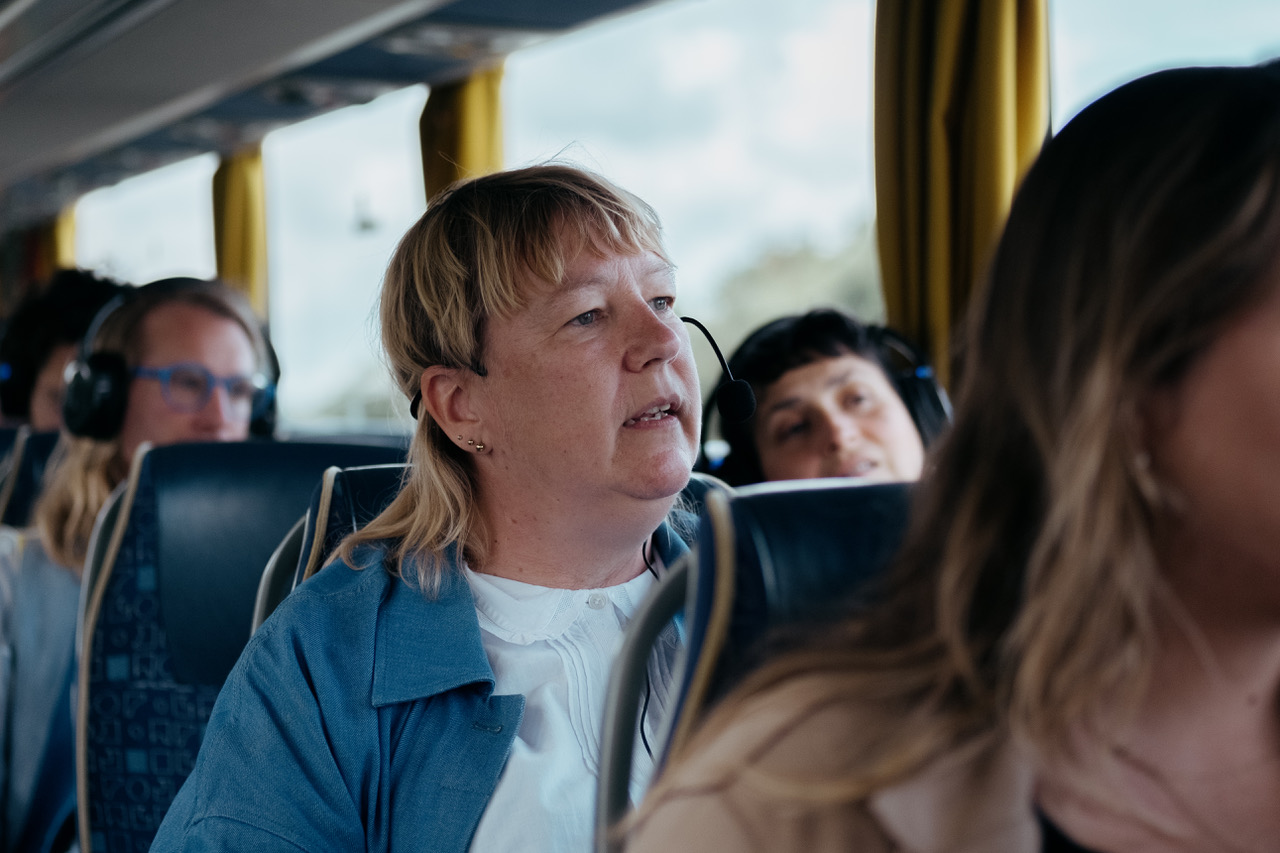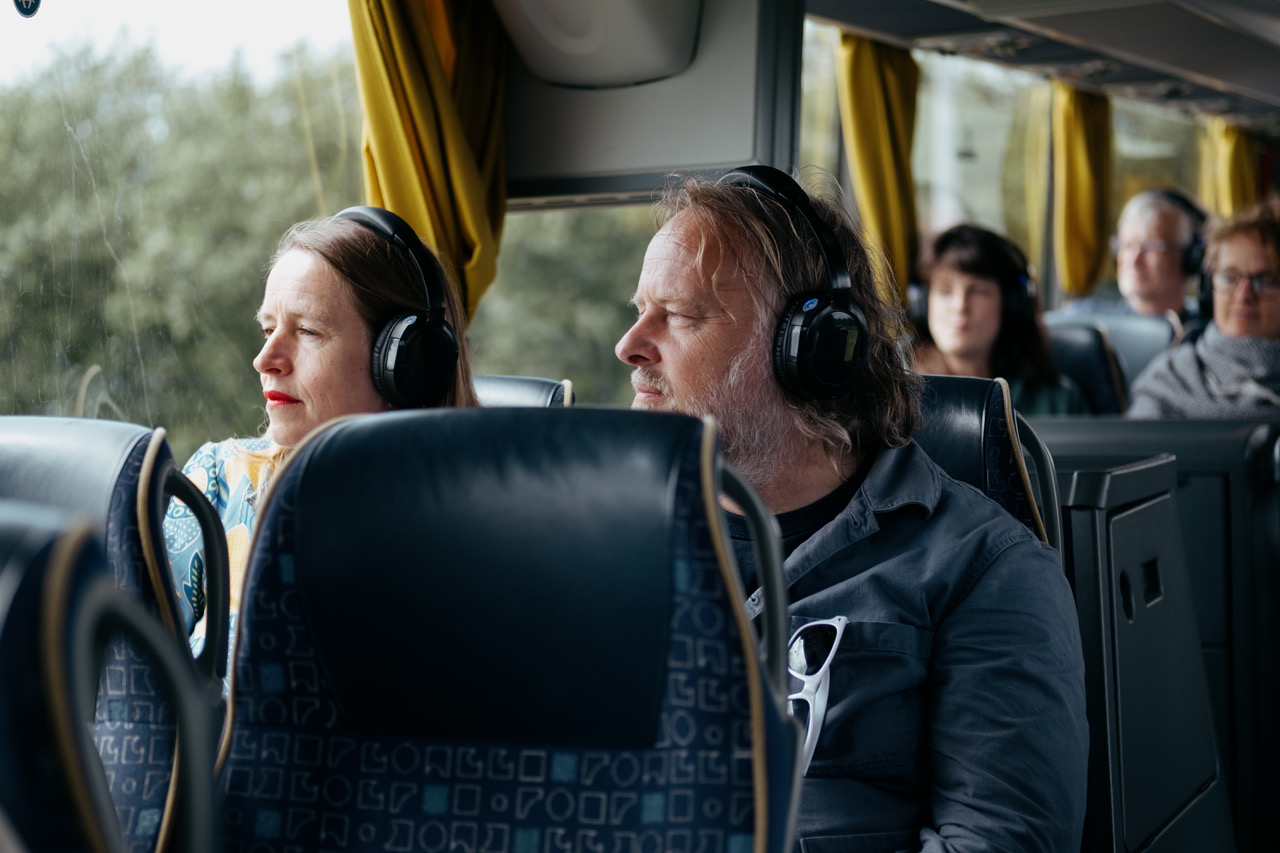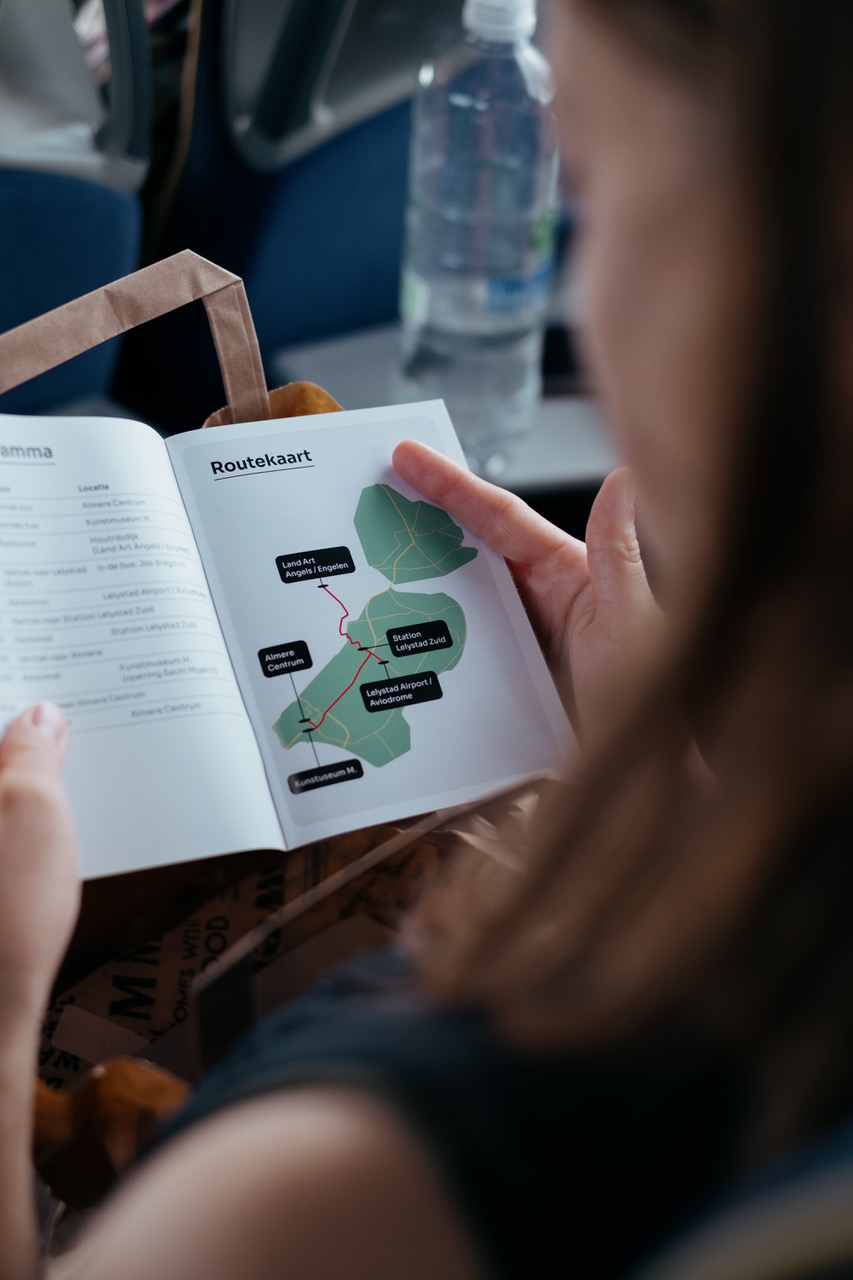
Flevolab Tour X Land Art Lives explores new possibilities for land art
Retrospective Flevolab Tour X Land Art Lives on July 11, 2024 by Anne van den Dool
A special edition of the Flevolab Tour in cooperation with Land Art Lives took place on Thursday, July 11, 2024. A bus full of interested people drove all afternoon past places around Lelystad where art and landscape could be combined. The focus was on the perspective of the maker: what possibilities does he or she see in the landscape of the youngest province?
Flevoland is already a rich province where land art is concerned: no fewer than ten works of art by internationally renowned artists such as Richard Serra, Antony Gormley and Robert Morris can be found in the landscape. Yet there are many more locations that could be suitable for such an intervention.
Such an intervention need by no means always be physical, the first stop of the bus tour shows. Engelen/Angels (1994) by Moniek Toebosch, one of the ten artworks in the collection of Land Art Flevoland, is not so much visible or tangible as audible: it is an audio work that can only be heard on the 26-kilometer-long dike between Enkhuizen and Lelystad. Between 1994 and 2000 this could be done by tuning the car radio to the FM frequency 98.0 MHz; since 2019 it can be done via an app.
The soundtrack features polyphonic singing, with the words hope and love interspersed through it in different languages. Algorithms make you hear a different composition every trip. All participants on the bus tour, listening through their headphones, are momentarily silenced by the sound clip.
Art at airport
The second stop of the afternoon is Lelystad Airport. Everything has been prepared here for the airport to function as a full-fledged airport for vacation traffic, expanding from Schiphol: a terminal, runway and control tower have been built, as well as parking lots and access roads. Yet to this day, no vacation flight has taken off from Lelystad Airport: Schiphol's expansion is on hold for environmental reasons. Only Aviation Museum Aviodrome provides the influx of visitors for the time being.
Airports like these turn out to be inspiring locations for artists and cultural organizations. For example, land art pioneer Robert Smithson collaborated on a design for the Dallas-Fort Worth Regional Airport in the 1960s, and the former Tempelhof airport in Berlin was transformed into a cultural city park after the reunification of Germany.
The Netherlands has similar initiatives. On the spot, with a view of the runway, artist Frank Havermans talks about Secret Operation, the project he carried out with artist collective RAAAF at the former Soesterberg airbase.The large, futuristic-looking pavilion on wheels served there as a temporary research center for scientists and artists. It now awaits a new function in a shed at an Arnhems industrial park.The project raises the question of whether Lelystad Airport could also serve as a location for such an intervention decades from now.
Abandoned train station as source of creativity
The third stop is Lelystad Zuid Station, built in 1988 as part of the Flevolijn line. However, this site was never put to use either: the residential area that was to serve the station was never built due to the 2008 economic crisis. Meanwhile, the station no longer meets current guidelines: stations are no longer constructed in the used arch shape, the platforms are too short and the concrete is not optimal after 35 years. Therefore, careful work has already begun on demolishing the station, including removing the stairs to the platforms to avoid dangerous situations.
Still, the complex has plenty of potential, several parties believe. Artist Elias Tieleman earlier came up with the idea of turning Lelystad South into an Art Station, with space for events and exhibitions. Temporary housing could be erected on the platform where artists could work on their projects. However, the idea proved unfeasible: ProRail does not allow such activities so close to the tracks.
Yet the need remains to make the station a vibrant place. Just this year, Tom Slots, an Architecture graduate from Arnhem's ArtEZ, won the Archiprix 2024 with his plans for the unused station. In his plan, titled De wachtkamer / The Waiting Room (in Dutch), he outlines an urban farm on the tracks, made of dismountable wood.Given the trains racing by, the idea is unfortunately not feasible, but it makes it clear how much the abandoned station captures the imagination.
Exercise in optimism
Another location that encourages artistic thinking is the Almeerderstrand. During the bus ride, Almere artist Jos Bregman takes the floor to highlight his ambitions as guest resident at StrandLAB Almere. Because the beach is built on a surface of grass, a beach cleaner must clear the sand of greenery on a weekly basis. Bregman sees opportunities for the vehicle to draw a creative pattern parallel to the organic shapes of the area. He invites all bus tour participants to draw a new pattern on a map of the beach. He will use that to determine the final route of the beach cleaner.
The last stop of the afternoon will be at Kunstmuseum M., where artist Sachi Miyachi's new exhibition opens that afternoon. She was previously asked to add an eleventh land art work to Land Art Flevoland's collection, a plan that backfired due to changes in the political guard and associated money flows. Fortunately, the plan for this exhibition did come to fruition: with De Baan - Oefening in Optimisme / Come and Play – Practising Optimism, she developed a playful golf course, where visitors can hit a ball themselves.
The exhibition may look playful, yet the underlying message is also serious: by comparing it to a golf landscape, Miyachi focuses attention on the question of whether Flevoland's landscape should be so raked. By reusing construction materials from the 2022 Floriade, she also focuses attention on another project in Flevoland that did not turn out as hoped.
Thus the tour shows how, in a relatively young province, the need for and feasibility of new projects continues to be sought.In doing so, artists can sometimes step in to address that discomfort and offer the possibility of giving a location a new, creative purpose, which may give it more eloquence than the original plans ever could.
























